5.4 /10 1 Votes5.4
Designer(s) Shigeki Fujiwara Arcade system Crazy Climber Initial release date 1980 Series Oretachi Gēsen Zoku | 2.7/5 Google Play Cabinet Upright CPU Z80 @ 3.072 MHz | |||||||||||||||||||||||||||||||||
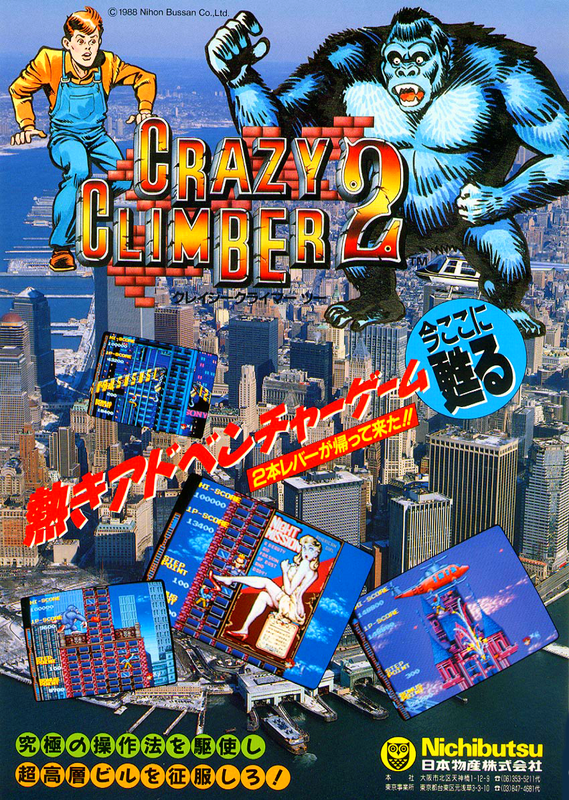 | ||||||||||||||||||||||||||||||||||
Release date(s) ArcadeOctober 1980Atari 2600NA: 1982FamicomJP: December 26, 1986Sharp X68000JP: August 27, 1993PlayStationJP: February 23, 1996PlayStation 2JP: July 21, 2005Virtual ConsoleJP: February 23, 2010PlayStation 4JP: May 15, 2014NA: May 26, 2015 Mode(s) Up to 2 players, alternating turns Genre Vertically scrolling video game Publishers Nihon Bussan, Taito, Hamster Corporation, Atari, Inc., Grandstand Similar Oretachi Gēsen Zoku games, Nihon Bussan games, Platform games | ||||||||||||||||||||||||||||||||||
Mame world record crazy climber 531 750
Crazy Climber (クレイジークライマー, Kureijī Kuraimā) is a coin-operated arcade game produced by Nichibutsu in 1980. It was also released in North America by Taito America Corporation by UA Ltd. in 1982 for the Emerson Arcadia 2001 and other video game consoles. It is one of Nichibutsu's most highly acclaimed video games in its library. A precursor to the platform game genre, Crazy Climber was the first video game revolving around climbing, specifically climbing buildings, before Nintendo's 1981 release Donkey Kong.
Contents

Crazy climber arcade game
Description
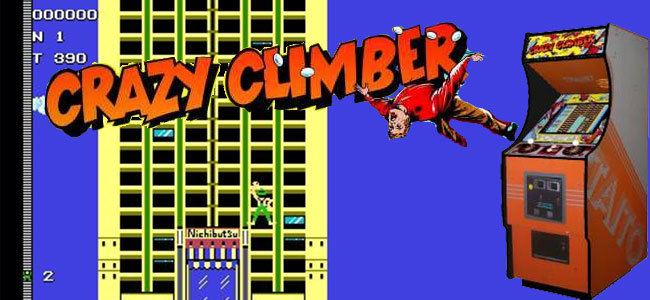
In Crazy Climber the player assumes the role of a stunt performer who is attempting to climb to the top of four skyscrapers. There are a number of obstacles and dangers to avoid including:
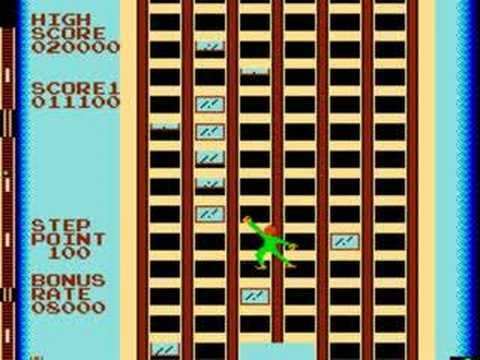
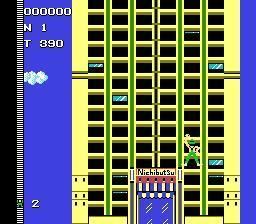
Some of these dangers appear at every level of the game; others make appearances only in later stages. Should the climber succumb to any one of these dangers, a new climber takes his place at the exact point where he fell; the last major danger is eliminated.
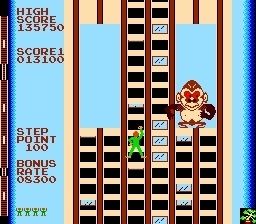
One ally the climber has is a pink "Lucky Balloon"; if he is able to grab it, the climber is transported up 8 stories to a window. The window onto which it drops the climber may be about to close. If the window that the climber is dropped onto is fully closed, the balloon pauses there until the window opens up again. The player does not actually earn bonus points for catching the balloon, but he is awarded the normal 'step value' for each of the eight floors that he passes while holding the balloon.

If the climber is able to ascend to the top of a skyscraper and grabs the runner of a waiting helicopter, he earns a bonus and is transported to another skyscraper, which presents more dangers than the past. The helicopter would only wait about 30 seconds, then fly off.
If the player completes all four skyscrapers, he is taken back to the first skyscraper and the game restarts from the beginning, but the player keeps his score.
One feature was that the difficulty level of any game was modified to take into account the skill of previous players. Hence if a player pushed the high score up to say 250,000 (needed a really good player), any novice player following would get thoroughly wiped out for several games due to the increased difficulty level, and would have to play until it dropped back down.
Musical cues used throughout the game include "Baby Elephant Walk", "The Pink Panther Theme", and "The Entertainer". Some cues were played to announce a danger; others served as 'victory' music.
The game also featured an early use of voice emulation. If the climber is not moved for several seconds, a voice says "Go for it!"
Crazy Climber is one of the few video games to use two joysticks and no buttons, and it's possibly the only non-twin-stick shooter to do so.
The Family Computer version had a special controller that could be used with it.
